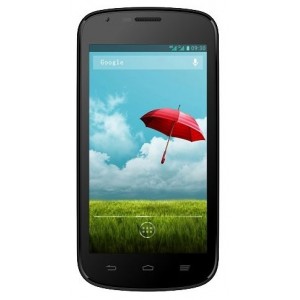Flash firmware on ZTE V829
Mobiles >> ZTE >> ZTE V829| Specifications | Reviews | Secret codes |
| Unlock phone | Root phone |
| Backup | Flash Firmware | Screenshot |
How to flash ZTE V829?
Why reinstall the firmware?
Errors begin to appear in the Android operating system.
Some installed applications stop opening.
Many programs from the Play Market do not work.
The phone restarts or shuts down randomly.
The phone slows down a lot during operation.
You are not satisfied with the functionality of the stock firmware.
Where can I find the firmware?
On the official website of the phone manufacturer.
On sites where third-party developers post custom operating systems.
What should be done before installing the firmware?
Create a backup copy of user data, contacts and photos and transfer it to your computer.
Insert an SD card into the gadget. It must have enough memory for the firmware.
Find out the exact model of your smartphone.
Fully charge your phone. If the battery runs out during boot, the device will no longer turn on.
Download archive with Firmware. Place it on the SD card.
Installing TWRP Recovery
Install the Official TWRP App from the Play Store on your phone.
At the first start, you need to give consent to future manipulations, as well as consent to granting the Superuser rights to the application. Check the checkboxes and press the 'OK' button.
On the next screen, select 'TWRP FLASH' and give the application root rights.

On the main screen of the application, the 'Select Device' drop-down list is available, in which you need to find and select the device model for installing the recovery.
After selecting a device, the program redirects the user to a web page to download the corresponding image file of the modified recovery environment. Download the suggested *.img file.
When the download is finished, you need to return to the main screen of the Official TWRP App and click on the 'Select a file to flash' button. Select the file downloaded in the previous step.
Press the 'FLASH TO RECOVERY' button and confirm your choice.
The recording process is very fast, and upon completion, the message 'Flash Completed Succsessfuly!' appears. Click 'OK'. The TWRP installation procedure can be considered complete.
Transfer the necessary files to the SD memory card. Using a PC or laptop card reader, it will be much faster.
Insert a memory card into your phone.
To reboot in recovery, it is convenient to use a special item in the Official TWRP App menu, accessible by pressing the button with three stripes in the upper left corner of the main screen of the application. We open the menu, select the 'Reboot' item, and then tap on the 'REBOOT RECOVERY' button. The phone will reboot into the recovery environment automatically.
Firmware via TWRP

Before flashing, it is recommended to clear the 'Cache' and 'Data' sections. This will delete all user data from the device, but avoid a wide range of software errors and other problems. You must press 'WIPE' on the main screen.
Everything is ready to start flashing. Press the 'Install' button.

The file selection screen appears. At the very top is the 'Storage' button, select the location where the firmware file is located.
Select the storage to which the files were copied.

Select the firmware file and click on it. A screen opens with a warning about possible negative consequences, you need to check the item 'Zip signature verification', which will avoid using corrupted files when writing to the phone's memory sections.
The procedure for writing files to the phone's memory will begin, accompanied by logging and filling in the progress bar.
The completion of the installation procedure is indicated by the inscription 'Successful'.
Summary: OS version: Android 4.2; CPU: MediaTek MT6572, 1300 MHz; Processor cores number: 2; RAM: 512 Mb; Built-in memory: 4 GB; Video processor: Mali-400 MP; Memory card slot: yes, volume of up to 32 GB; Multi SIM mode: alternate; SIM-card amount: 2; Case type: classic; Height: 136 mm; Width: 68 mm; Thickness: 10 mm; Diagonal: 4.5"; Screen type: colored TFT, 16.78 mln colors, sensor; Sensor screen type: multitouch, capacitive; Screen size: 854x480; Number of pixels per inch (PPI): 218; Aspect Ratio: 16:9; Rear camera: 8 MP; Flash: rear; Video Recording: yes; Standard: GSM 900/1800/1900, 3G; Interfaces: Wi-Fi, Bluetooth 3.0, USB; Satellite navigation: GPS; Audio: MP3, FM-radio; Headphone jack: 3.5 m ...
Comments, questions and answers on the flash firmware ZTE V829
Ask a question about ZTE V829




